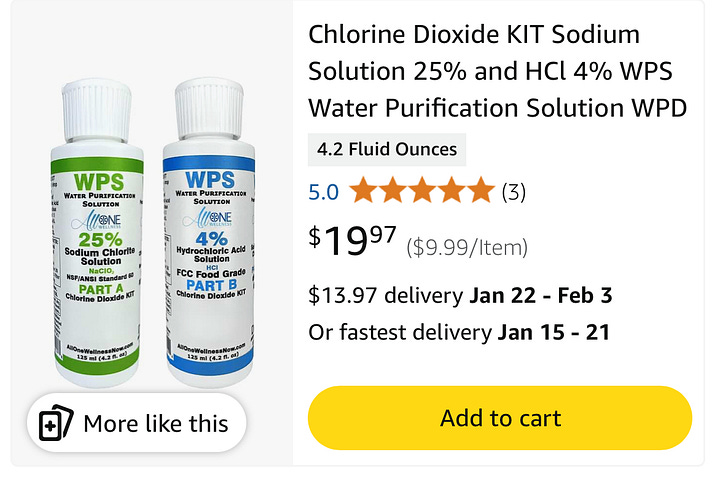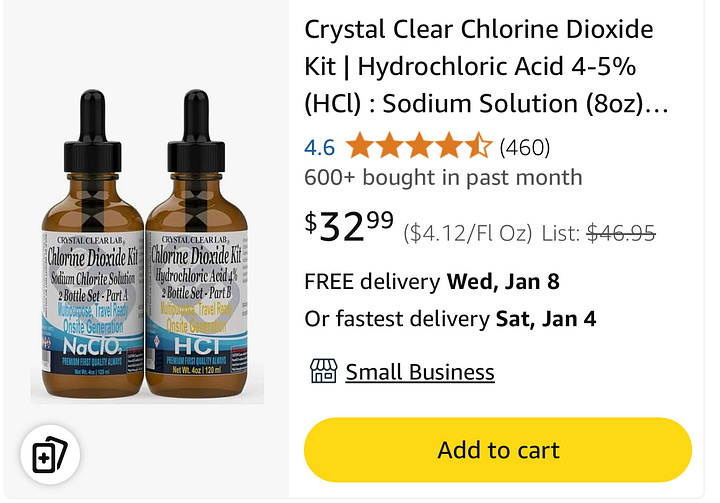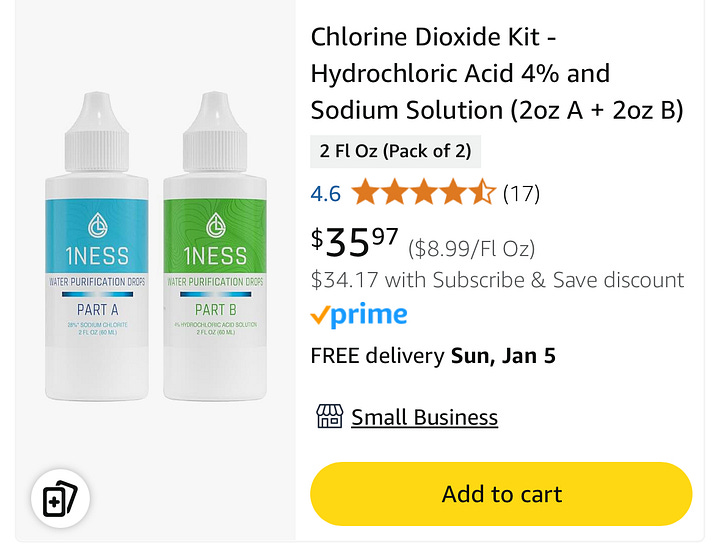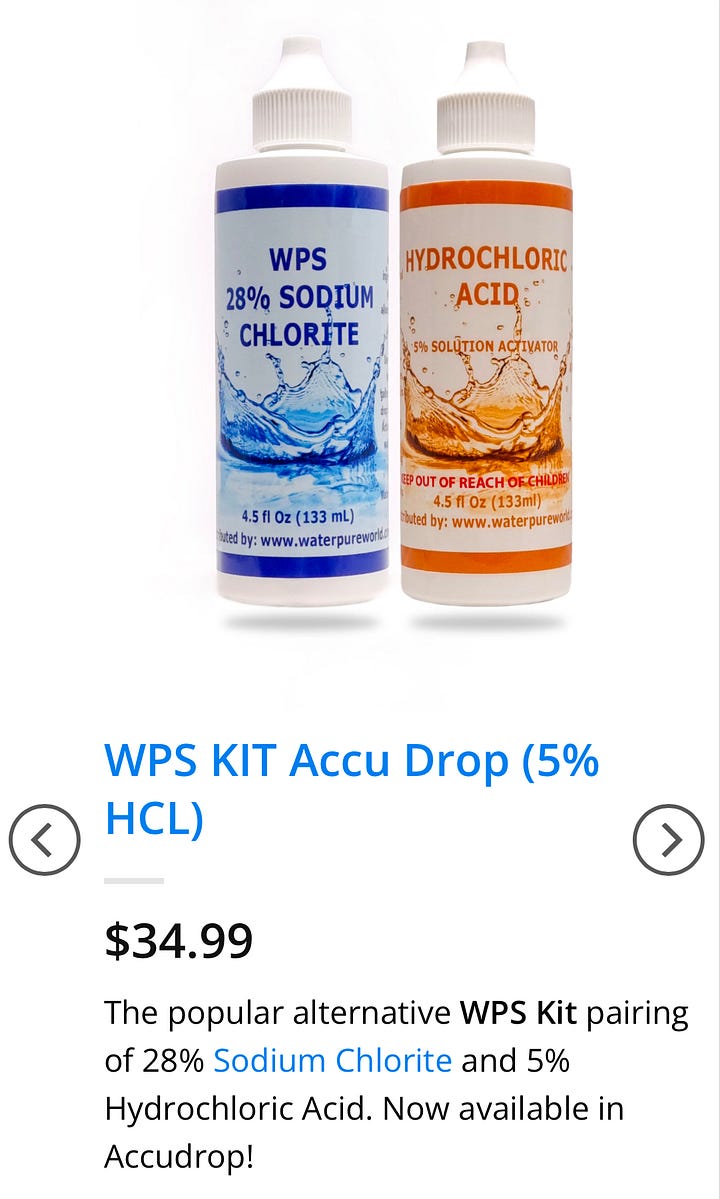Chlorine Dioxide: The Simple Universal Solution for Safe Drinking Water
Learn How to Purify Water Anywhere, Anytime
Chlorine dioxide (ClO₂) is a highly safe and effective disinfectant widely recognized for its ability to purify water by killing bacteria, viruses, and even some hardy protozoan parasites such as Giardia and Cryptosporidium. [1,2] Its broad-spectrum efficacy, safety profile, and ease of use make it a preferred choice for travelers, hikers, and emergency responders who need reliable access to clean drinking water in remote or challenging environments. [2,3] Unlike traditional chlorine, chlorine dioxide does not form harmful disinfection byproducts (DBPs) such as trihalomethanes or haloacetic acids, making it both safer and more environmentally friendly. [1,3,4,5,9]
Versatility of Chlorine Dioxide
Chlorine dioxide stands out as an exceptionally versatile water treatment solution. It is effective in a wide range of settings, from urban water treatment plants to remote backcountry streams. For travelers and backpackers, chlorine dioxide tablets or two-part solutions provide a lightweight, portable method to ensure water safety without the need for bulky equipment or fuel for boiling. [2,3,9] In emergency situations—such as natural disasters, military deployments, or humanitarian crises—chlorine dioxide is invaluable for quickly disinfecting large volumes of water, helping to prevent outbreaks of waterborne diseases[1,2,3]. Its effectiveness is maintained across a wide pH range and with turbidity levels, provided the water is filtered or allowed to settle before treatment. [3,6,7] Furthermore, chlorine dioxide is also used industrially for cooling towers, food processing, and medical sterilization, underscoring its broad utility and reliability. [4,8]
Step-by-Step Instructions: Purifying Water with 25% Sodium Chlorite and 4% HCl
Materials Needed:
25-28% sodium chlorite solution
4-5% hydrochloric acid (HCl) activator solution
Small clean, dry glass or plastic container (for activation). Preferably with a top that has a lid or can be covered.
Water to be purified (1 liter or 1 gallon, clear to light turbidity)
Measuring dropper or dropper spout on bottles
Instructions:
Filter or Settle the Water (if turbid):
If the water is cloudy, filter it through a clean cloth or coffee filter to remove debris
The goal is to remove as much debris and particulate matter as possible
Activate the Chlorine Dioxide Solution:
For 1 liter of water: Add 2 drops of 25% sodium chlorite and 2 drops of 4% HCl to a clean, dry glass or plastic container. Wait about 60 seconds for the mixture to turn yellow, indicating activation
For 1 gallon (about 3.8 liters) of water: Add 8 drops of each solution (8 drops sodium chlorite and 8 drops HCl) to the activation container. Wait 30 seconds for activation.
Optional (I always do this to make sure that I get all of the chlorine dioxide):
After activation, add a small amount of water (about 20-50 ml) to the activated solution to help transfer it and minimize fumes.
Add Activated Solution to Water:
Pour the activated solution into the container of water to be purified. Stir or shake gently.
Wait for Disinfection:
For most pathogens (bacteria, viruses, Giardia): Wait at least 30 minutes before drinking[2,3].
For Cryptosporidium: Wait up to 4 hours for maximum effectiveness[2,3].
Enjoy Safe Water:
After the appropriate contact time, the water is safe to drink.
Where to buy Chlorine Dioxide Water Purification Kits
Since chlorine dioxide can be sold legally as a water purifier you can readily find water purification kits on Amazon and at many online retailers. You only need to make sure that the water purification kit that you purchase comes with two bottles. One solution bottle that is 25-28% sodium chlorite and one solution bottle that is 4%-5% HCL or 50% citric acid.
On Amazon the search phrase, “chlorine dioxide water purification kit” should get a good list of kits.
Here are some examples of what the kits will look like.




Conclusion
Chlorine dioxide is a scientifically validated, versatile disinfectant for water purification, suitable for travelers, hikers, and emergency situations. It offers broad-spectrum protection against waterborne pathogens, is easy to use, and minimizes harmful byproducts compared to traditional chlorine. The method described above is supported by both practical guides and scientific literature, ensuring reliable results in most real world conditions.
Below is a video demonstration of water, purification of 5 gallons of well water that I was using for a camping trip.
References
1 . Jefri UHNM, et al. A systematic review on chlorine dioxide as a disinfectant. J Med Life. 2022 Mar;15(3):313-318.
https://pmc.ncbi.nlm.nih.gov/articles/PMC9015185/
2. U.S. Army Center for Health Promotion and Preventive Medicine. (2006, March). Chlorine dioxide disinfection in the use of individual water purification devices (Technical Information Paper No. 31-007-0306). https://apps.dtic.mil/sti/tr/pdf/ADA453968.pdf
3. Downthetrail.com. (n.d.). Best water purifier for backpacking (it's not a filter). https://www.downthetrail.com/gear/best-water-purifier-for-backpacking-filter/
4 . PureLine. (n.d.). Chlorine dioxide water treatment is the future of water purification. https://www.pureline.com/chlorine-dioxide-water-treatment-is-the-future-of-water-purification/
5. Occidental Chemical Corporation. (2022, August). Treatment of drinking water with chlorine dioxide. https://www.oxy.com/siteassets/documents/chemicals/products/other-essentials/treatment-of-drinking-water-with-chlorine-dioxide.pdf
6. Kephart, C. M., & Stoeckel, D. M. (2011). Results of an evaluation of the effectiveness of chlorine dioxide as a disinfectant for onsite household sewage treatment systems (U.S. Geological Survey Open-File Report 2011–1096). U.S. Geological Survey. https://pubs.usgs.gov/of/2011/1096/pdf/ofr2011-1096.pdf
7. Hokoa, Z., et al. (2021). Investigating use of chlorine dioxide for pre-treatment of raw water from polluted sources at Morton Jaffray Water Treatment Works, Harare, Zimbabwe. Water Practice & Technology, 16(4), 1290–1303. https://doi.org/10.2166/wpt.2021.077
8. International Dioxcide. (n.d.). Chlorine dioxide water treatment: Benefits, compliance & more. idiclo2.com. https://idiclo2.com/clo2-applications/water-treatment/
9. Xu MY, Lin YL, Zhang TY, Hu CY, Tang YL, Deng J, Xu B. Chlorine dioxide-based oxidation processes for water purification:A review. J Hazard Mater. 2022 Aug 15;436:129195. https://www.sciencedirect.com/science/article/pii/S0304389422009852




